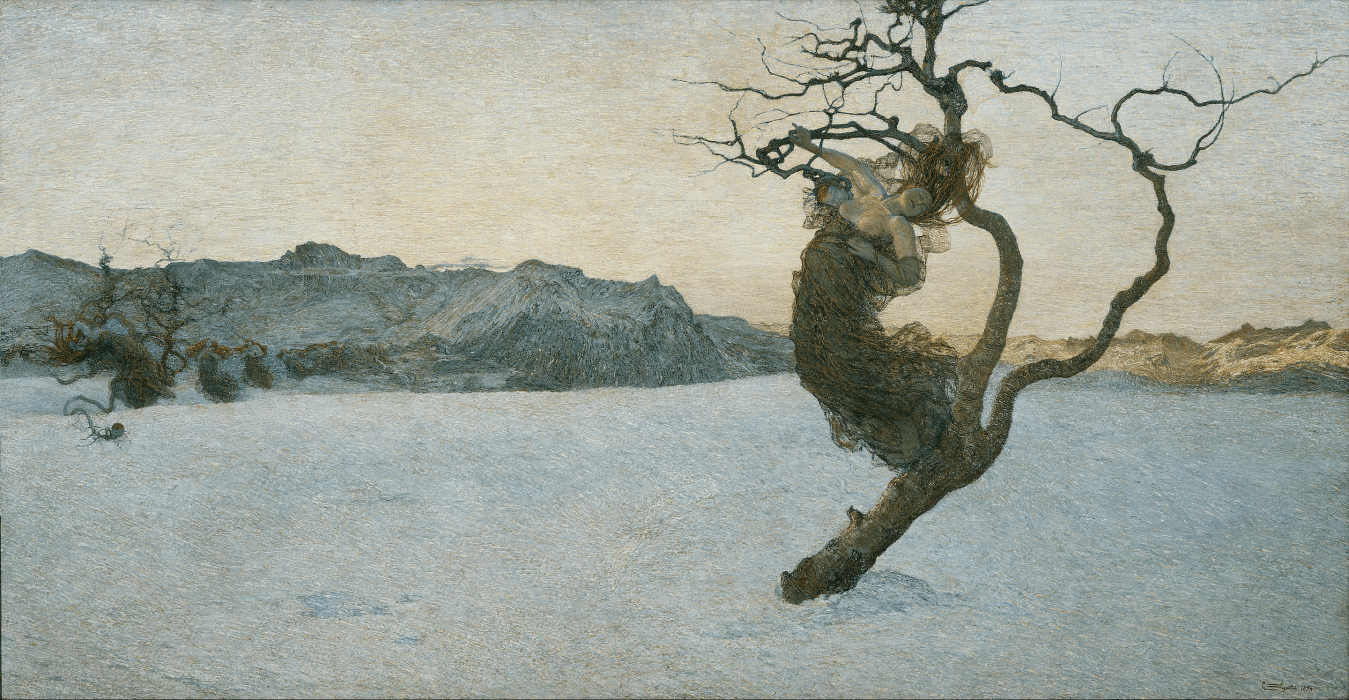The tree is omnipresent in cultural history because it is an extremely effective carrier of human content. The material aspect and economic use of the tree, as well as its spiritual, aesthetic and ecological functions, are of fundamental importance to society. The personified tree acts as a social being, as a loner, as a listener, as a guardian, even as a saviour of the climate ready to receive the messages we transmit. The tree in art must therefore be understood not only as an impulse towards a symbolic interpretation of nature, but also towards an interpretation of man himself and thus of his position in nature.
A tangible constant of mythical thought, the tree stimulates our imagination with its superhuman size. First and foremost, the tree is a symbol of the supernatural, which is important not only in sacred art, but in any symbolic position. From the 19th century to contemporary art, the tree has increasingly been used to convey acute social and environmental messages. Whether in a scene of suffering, in which the naked, bent branches reflect mental and physical pain, or in an allegory of life, in which its overwhelming strength and blossom stand for supreme vitality, the tree is explained in this art not as a decorative backdrop, but as a carrier of subjective ideas about the world. On the other hand, the tree is increasingly and intensively given the role of ‘saviour’ to demonstrate its importance for human survival in the face of a collapsing environment.
This successful exhibition was not conceived as a rigid, finished product, but as an exchange, dialogue and dynamism – a common statement that can also demonstrate on a museum level the great themes of ecology, sustainability and socio-cultural diversity through the ultimate anthropological constant such as the tree. It is built around the important theme that changes, grows, adapts naturally, that connects the institutions and makes a statement for sustainability and the importance of nature as a core message in art and curatorial practice.
Dr Miroslav Haľák is an art historian and theorist. Since 2017, he has worked at the Austrian Gallery Belvedere in Vienna. In addition to nineteenth and twentieth century art, his research focuses on visual semiotics, psychological aesthetics, visual anthropology, Byzantine image theology, and current visual studies in the digital humanities. As a curator, he has participated in exhibitions on classical modernism and on the divergent positions of contemporary art. In the exhibition GROW. Der Baum in der Kunst (Belvedere, Vienna, 2022–2023 –https://www.belvedere.at/en/grow) and LET IT GROW AGAIN (The South Bohemian Gallery 2024 – https://www.ajg.cz/belvedere-na-hluboke-let-it-grow-again/en.html), he attempted to devise a universal typology for the representation of trees in art using visual semiotics. Since 2024, he has been a lecturer in visual semiotics at Masaryk University in Brno. He is a member of the International Association of Art Critics (AICA) and sits on the editorial board of ARS, a journal published by the Institute of Art History of the Slovak Academy of Sciences.
Organised by Natalia Murray, Lecturer in Modern Art and Curating, The Courtauld.






